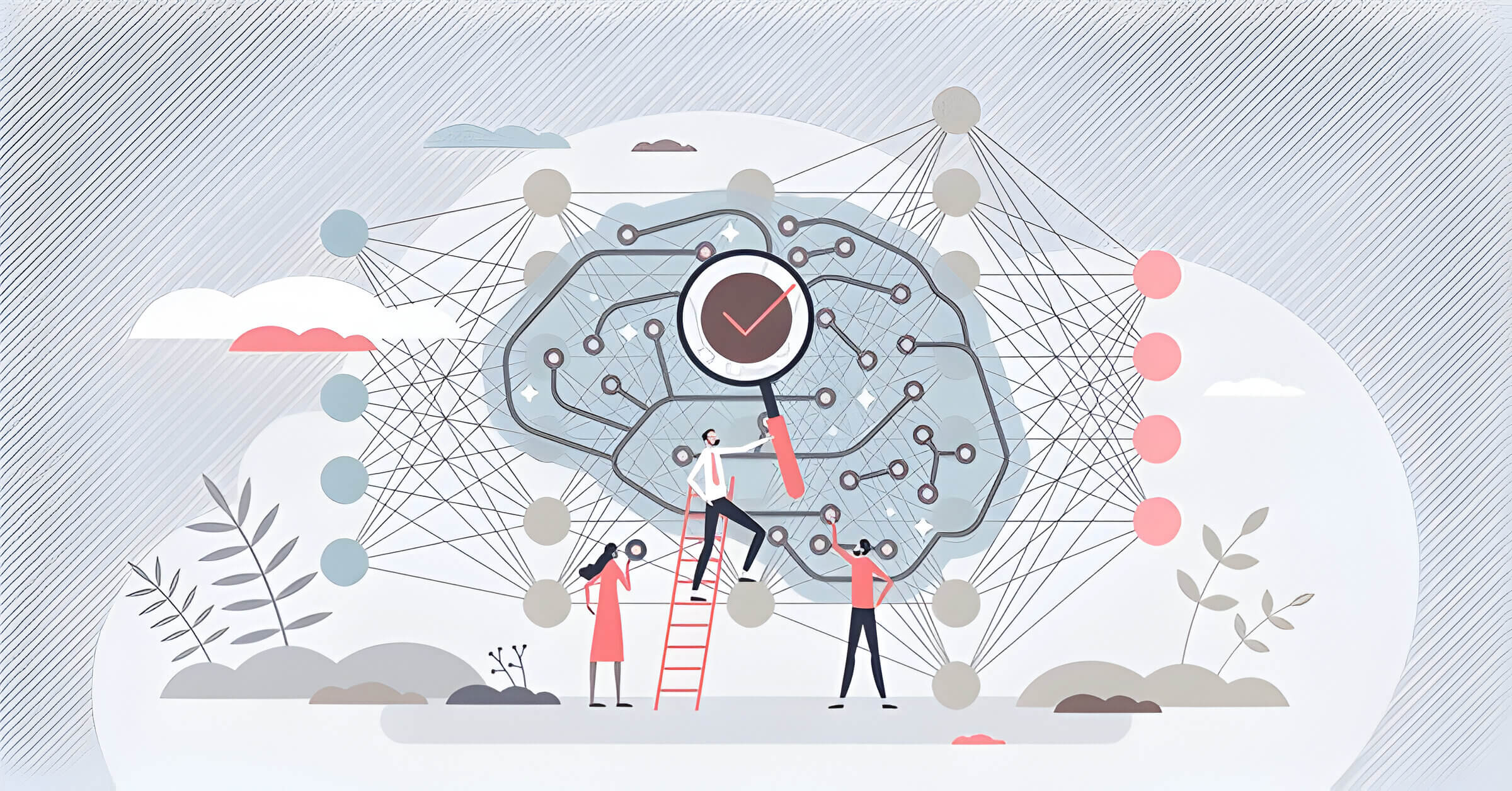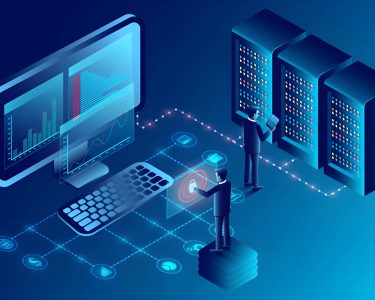Deep Learning, a subset of machine learning, mimics the human brain’s workings to revolutionize artificial intelligence. It allows machines to process vast data and make complex decisions without explicit programming. We’ll explore its principles, applications, and impact across industries, while considering challenges and future prospects in this evolving field.
The Basics of Deep Learning
Deep learning is a powerful subfield of artificial intelligence and machine learning that has revolutionized various industries. At its core, deep learning is a method of training artificial neural networks to perform complex tasks by processing vast amounts of data. These neural networks are designed to mimic the human brain’s structure and function, allowing them to recognize patterns, make decisions, and solve problems with remarkable accuracy.
Unlike traditional machine learning algorithms, deep learning models can automatically learn hierarchical representations of data, eliminating the need for manual feature engineering. This capability enables deep learning systems to excel in tasks such as image and speech recognition, natural language processing, and autonomous driving.
The “deep” in deep learning refers to the multiple layers of interconnected nodes within neural networks. Each layer processes and transforms the input data, gradually extracting more abstract and complex features. This layered approach allows deep learning models to capture intricate relationships and nuances within the data, leading to superior performance in many applications.
As an essential component of modern AI systems, deep learning continues to push the boundaries of what’s possible in fields like healthcare, finance, and robotics, paving the way for increasingly sophisticated and intelligent technologies.
The Core Components of Deep Learning Systems
Deep learning systems are built upon several core components that work together to create powerful and sophisticated models. At the heart of these systems are neural network layers, which consist of interconnected nodes or neurons that process and transmit information. These layers are stacked to form complex architectures capable of learning intricate patterns in data.
Activation functions play a crucial role in introducing non-linearity to the network, allowing it to learn and represent complex relationships. Common activation functions include ReLU, sigmoid, and tanh, each with its own strengths and use cases.
Backpropagation is the fundamental algorithm used to train deep learning models. It efficiently calculates gradients and updates the network’s weights, enabling the model to learn from its mistakes and improve its performance over time.
High-quality training data is essential for developing accurate and robust deep learning models. Large datasets that are diverse and representative of the problem domain help the model generalize well to new, unseen examples.
The deep learning architecture itself is a critical component, with various designs optimized for different tasks. Convolutional Neural Networks (CNNs) excel in image processing, while Recurrent Neural Networks (RNNs) and Long Short-Term Memory (LSTM) networks are well-suited for sequential data and natural language processing tasks.
By leveraging these core components, researchers and practitioners can create powerful deep learning systems capable of tackling complex problems across various domains.
How Deep Learning Works
Deep learning, a subset of machine learning, mimics the human brain’s neural networks to process and analyze vast amounts of data. The journey from input to output in deep learning involves several key steps:
Data processing is the first crucial stage, where raw input is cleaned, normalized, and prepared for analysis. This ensures that the deep learning model receives high-quality, consistent information to work with.
Feature extraction follows, where the algorithm identifies and isolates relevant characteristics from the processed data. This step is critical in reducing dimensionality and focusing on the most important aspects of the input.
Pattern recognition is at the heart of deep learning. As the model processes more data, it begins to identify recurring patterns and relationships between different features. This ability to recognize complex patterns is what sets deep learning apart from traditional machine learning techniques.
Deep learning algorithms, such as convolutional neural networks (CNNs) and recurrent neural networks (RNNs), are designed to handle specific types of data and tasks. These algorithms consist of multiple layers that progressively extract higher-level features from the input.
Model training is an iterative process where the algorithm learns from its mistakes and adjusts its parameters to improve accuracy. This involves feeding the model large datasets, comparing its outputs to known results, and fine-tuning its internal weights and biases.
Through these steps, deep learning models can transform raw input into meaningful output, enabling applications ranging from image recognition to natural language processing and beyond.
Types of Deep Learning Networks and Their Applications

Deep learning networks have revolutionized various fields of artificial intelligence, each with its unique architecture and applications. Convolutional Neural Networks (CNNs) excel in image and video processing tasks, making them invaluable for facial recognition, object detection, and medical image analysis. Recurrent Neural Networks (RNNs) are designed to handle sequential data, finding applications in natural language processing, speech recognition, and time series prediction.
Generative Adversarial Networks (GANs) have gained popularity for their ability to generate realistic synthetic data. They are widely used in image generation, style transfer, and even in creating deepfake videos. Deep Reinforcement Learning combines deep learning with reinforcement learning principles, enabling machines to learn complex decision-making processes. This approach has shown remarkable results in game playing, robotics, and autonomous systems.
Each of these deep learning network types continues to evolve, with researchers and developers constantly finding new applications and improving their performance. As these technologies advance, we can expect to see even more innovative uses across various industries, from healthcare and finance to entertainment and scientific research.
Real-World Applications of Deep Learning
Deep learning, a subset of machine learning, has revolutionized numerous industries with its ability to process and analyze vast amounts of data. One of the most prominent applications is image recognition, where deep learning algorithms can identify objects, faces, and even emotions in images with remarkable accuracy. This technology is widely used in security systems, social media platforms, and smartphone cameras.
Natural language processing (NLP) is another field where deep learning excels. It enables machines to understand, interpret, and generate human language, powering virtual assistants, chatbots, and language translation services. These advancements have significantly improved human-computer interactions and broken down language barriers.
Autonomous vehicles rely heavily on deep learning algorithms to navigate roads, detect obstacles, and make split-second decisions. By processing data from various sensors and cameras, these systems can operate vehicles safely and efficiently, potentially reducing accidents and traffic congestion.
In healthcare, deep learning is transforming diagnostics by analyzing medical images, such as X-rays and MRIs, to detect diseases and abnormalities with high precision. This technology assists medical professionals in making more accurate diagnoses and developing personalized treatment plans.
Financial institutions leverage deep learning for forecasting market trends, detecting fraud, and assessing credit risks. By analyzing historical data and identifying complex patterns, these systems help make informed investment decisions and enhance security measures.
As deep learning continues to evolve, we can expect to see even more innovative applications across various sectors, further transforming our daily lives and industries.
Challenges and Limitations of Deep Learning
Deep learning has revolutionized many fields, but it’s not without its challenges and limitations. One of the primary hurdles is the substantial data requirements. These models often need massive datasets to achieve high performance, which can be costly and time-consuming to acquire.
Computational power is another significant concern. Training deep learning models requires extensive processing capabilities, often necessitating specialized hardware like GPUs or TPUs. This can make deep learning inaccessible for smaller organizations or individual researchers with limited resources.
The “black box” problem remains a persistent issue in deep learning. While these models can produce impressive results, understanding how they arrive at their decisions can be challenging. This lack of interpretability can be problematic in fields where transparency is crucial, such as healthcare or finance.
Overfitting is a common challenge in deep learning, where models perform exceptionally well on training data but fail to generalize to new, unseen data. Addressing this issue requires careful model design and regularization techniques.
Lastly, deep learning raises several ethical concerns. These include potential biases in training data leading to unfair or discriminatory outcomes, privacy issues related to data collection and use, and the potential for misuse in applications like deepfakes or autonomous weapons systems.
As the field progresses, researchers and practitioners must continue to address these challenges to unlock the full potential of deep learning while mitigating its limitations and ethical concerns.
The Future of Deep Learning
The future of deep learning holds exciting possibilities as researchers and developers continue to push the boundaries of artificial intelligence. Unsupervised learning is expected to play a crucial role in advancing AI capabilities, allowing machines to learn from vast amounts of unlabeled data and discover patterns autonomously. This approach could lead to more adaptable and versatile AI systems capable of handling complex, real-world scenarios.
Transfer learning is another trend gaining momentum, enabling AI models to apply knowledge gained from one task to new, related tasks. This technique promises to reduce the need for extensive training data and computational resources, making AI more accessible and efficient.
Edge computing is set to revolutionize deep learning applications by bringing processing power closer to the data source. This shift will enable faster decision-making, reduced latency, and improved privacy for AI-powered devices and systems.
Advancements in neuromorphic hardware are paving the way for more energy-efficient and brain-like computing architectures. These specialized chips could dramatically enhance the performance and scalability of deep learning models while reducing power consumption.
As AI becomes increasingly integrated into our daily lives, the importance of AI ethics cannot be overstated. Future developments in deep learning will likely focus on creating more transparent, explainable, and fair AI systems to address concerns about bias, privacy, and accountability.






